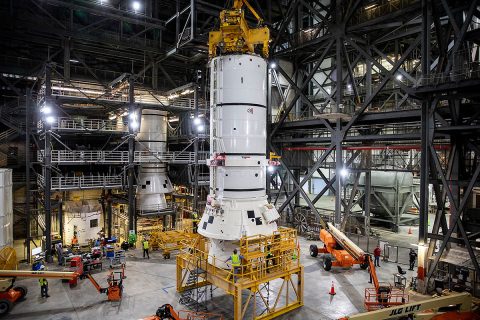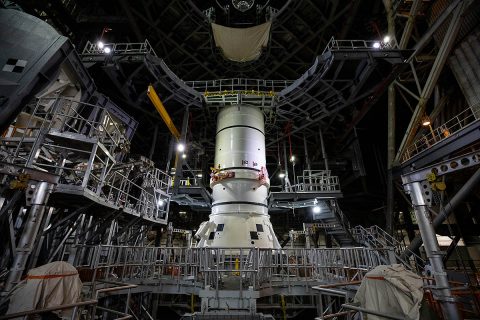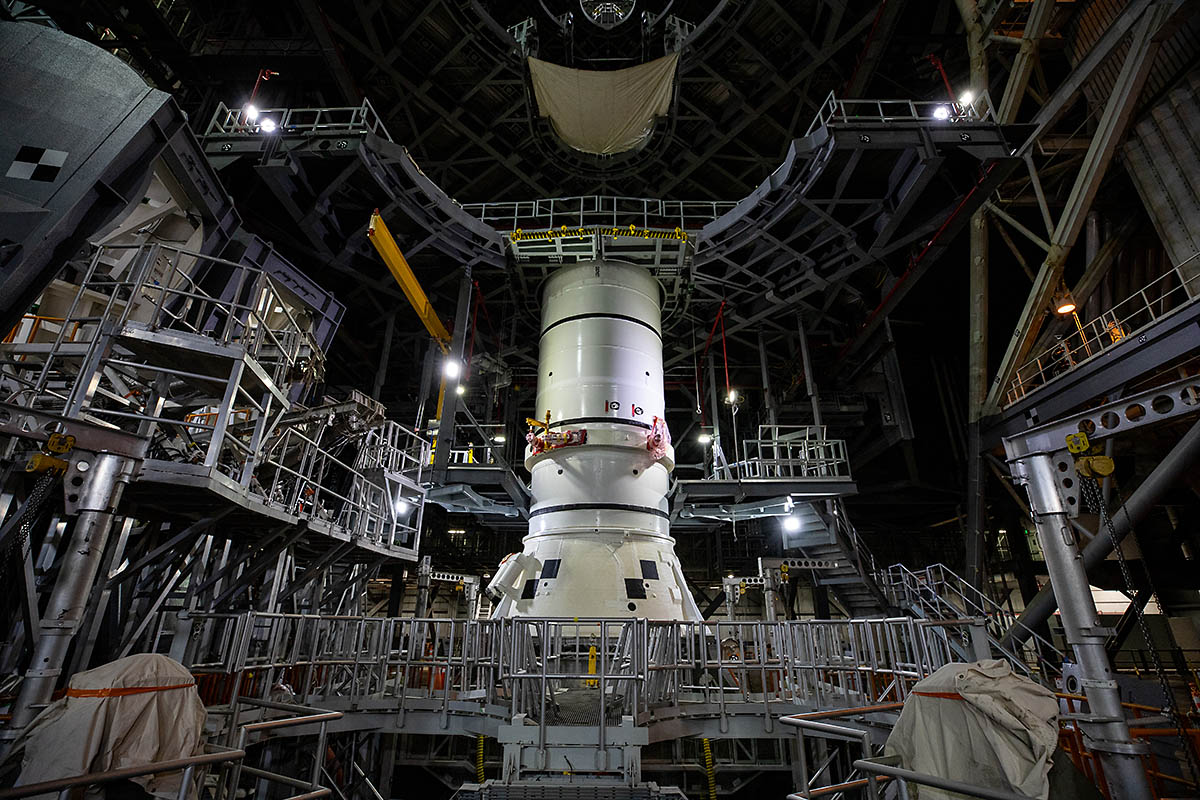 Florida – NASA has stacked the first piece of the Space Launch System (SLS) rocket on the mobile launcher in preparation for the Artemis I launch next year. At NASA’s Kennedy Space Center in Florida, engineers lowered the first of 10 segments into place November 21st, 2020 for the twin solid rocket boosters that will power the first flight of the agency’s new deep space rocket.
Florida – NASA has stacked the first piece of the Space Launch System (SLS) rocket on the mobile launcher in preparation for the Artemis I launch next year. At NASA’s Kennedy Space Center in Florida, engineers lowered the first of 10 segments into place November 21st, 2020 for the twin solid rocket boosters that will power the first flight of the agency’s new deep space rocket.
Artemis I will be an uncrewed flight to test the SLS rocket and Orion spacecraft as an integrated system ahead of crewed flights to the Moon with the Artemis program.

The booster segments arrived by train at the Florida spaceport in June from Northrop Grumman’s manufacturing facility in Utah to undergo final launch preparations.
Stacking operations began November 19th with engineers transporting a booster segment from the Rotation, Processing and Surge Facility to the 525-foot-tall Vehicle Assembly Building (VAB).
Each booster consists of five segments and will provide 7 million pounds of thrust for the liftoff from Launch Pad 39B. When assembled, each booster will be about half the length of a football field, and together they will generate more thrust than 14 four-engine jumbo commercial airliners.
Once stacked, the SLS rocket will stand taller than the Statue of Liberty and have about 15% more thrust at liftoff than the Apollo program Saturn V rocket, making it the most powerful rocket ever built.

“Stacking the first piece of the SLS rocket on the mobile launcher marks a major milestone for the Artemis Program,” said Andrew Shroble, an integrated operations flow manager with Jacobs. “It shows the mission is truly taking shape and will soon head to the launch pad.”
The solid rocket boosters are the first components of the SLS rocket to be stacked and will help support the remaining rocket pieces and the Orion spacecraft. Over the next several weeks, workers will use an overhead crane that can hold up to 325 tons (the weight of about 50 elephants), to lift the remaining segments one by one and place them carefully onto the 380-foot-tall mobile launcher, the structure used to process, assemble, and launch the SLS rocket. The cranes are precise enough to lower an object onto an egg without cracking it.
The first booster segments to be stacked are the bottom sections known as the aft assemblies. These house the system that controls 70% of the steering during initial ascent of the rocket. This section includes the aft motor segment and skirt, and the nozzle that directs the hot gas leaving the motor.
After stacking the other four segments, the final pieces of the boosters are the forward assemblies, which include the nose cone that serves as the aerodynamic leading edge of the boosters. The forward assemblies will attach to the core stage when it arrives next year.
Under the Artemis program, NASA aims to land the first woman and the next man on the Moon in 2024 and establish sustainable lunar exploration by the end of the decade. SLS and Orion, along with the human landing system and the Gateway in orbit around the Moon, are NASA’s backbone for deep space exploration.



